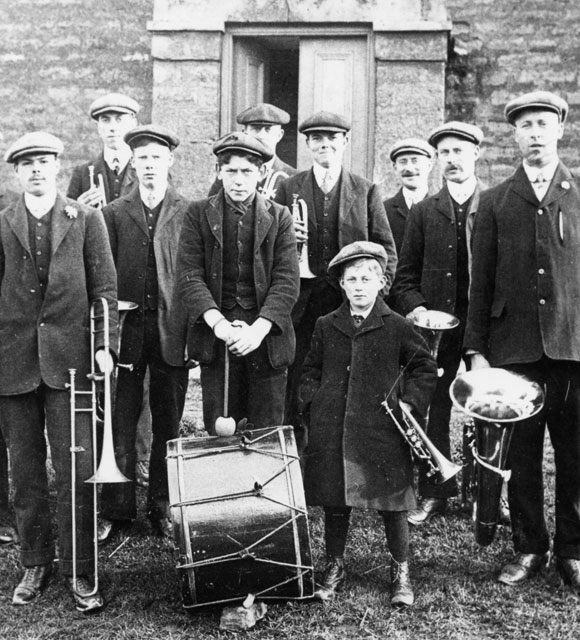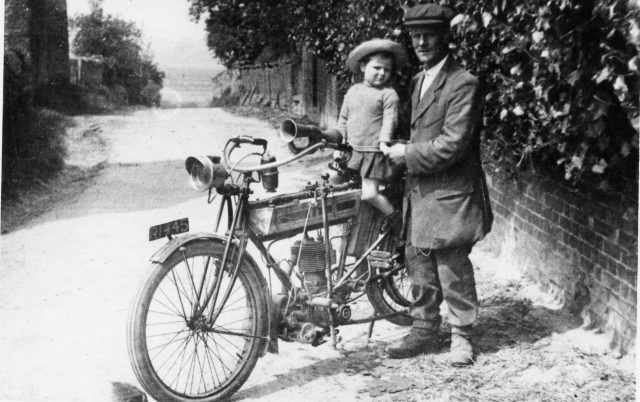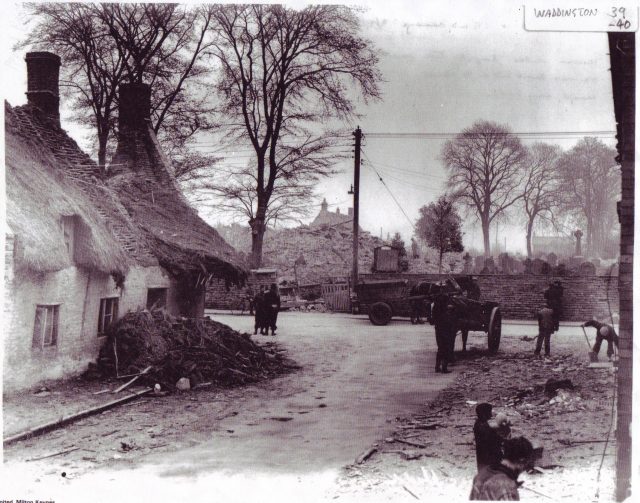Horace Dudley Diaries
Excerpts from the notebooks of Horace Dudley, Village Photographer, Waddington 1890-1946 copied from the notebooks of the late Rob Sutton by Dave Reeves December 2017.
April 11th 1909
Photographed the village band outside the Wesleyan chapel today … the band known locally as the ‘band o’musics’ are kept busy with the anniversary of Queen Victoria’s birthday, Empire Day with its patriotic songs, usually accompanied by Yankee Gilyatt on his fiddle and a maypole on hilltop.

June 17th 1905
This morning I photographed Yankee Gilyatt with his daughter and motorcycle outside ‘High House’ in Rectory Lane. Apparently in 1861, Tom and Fred Gilyatt, two brothers, left Waddington to fight in the American Civil War and in fact were awarded land for reclamation. Tom returned with a mysterious Mexican wife and a baby son. Just as mysteriously as they had arrived, they left, leaving the baby to be brought up by old Jim Kelsey – The child was nicknamed ‘Yankee’ and it has stuck with him.
Yankee is a known poacher and along with Mr Skaith cooks rabbit in the back of Skaith’s shop in the market place, probably drinking methylated spirit with the meat.
At the local farthing dances held in a tap room at the Horse and Jockey, he accompanies popular songs on his cherished fiddle. He wears his cap back to front and it’s rumoured that he sleep on a bed of gold sovereigns.

Miss Clara Cobb fetching water Parish Pump, Hill Top
October 27th 1905
Due to the typhoid epidemic, many residents who have wells are being advised to use only the Parish pump on Hill Top near the horse pool. On one of my visits there I took this picture of Miss Clara Cobb, Jack Fletcher and his dog ‘Nipper’ and Mr & Mrs Brough. Miss Cobb is one of the leading members of the village cycling club.
Bringing in the sheaves
September 14th 1908
Today I joined the Briggs family harvesting at Waddington Grange. They’d started at 6 while the dew was wet, which helps keep the stalks damp. They were with the Bartons and the Moores, ganging up in one field. After the corn is cut the adults gather it into sheaves and the children make bands for binding them from the longer stalks.
As the day grew hotter George Briggs called a halt “We’d best rest mother, till the dew comes down”. Work always goes on till late at night and as each family gang continue through the field, the odd sheaves are thrown into the hedge and taken as perks. Mr Peak the schoolmaster usually measures up the average cut for which 5/- an acre is paid in golden sovereigns.
At last everyone climbs onto the moffreys riding home on top of the corn singing:
“Mr Wright is a very good man
And gets his harvest as well he can
Well sown, well mown
Ne’er stuck fast, nor yet o’erthrown
An old sheeps head
And a bacon bone
And now we’ll shout the harvest home
Hip Hip Hooray!”
I was invited for supper by George Briggs, whose eldest daughter, Bertha had gone on earlier and prepared it, and very nice it was too. We chatted about the days work threshing the newly reaped harvest.
May 14th 1941
Elsie Staples came to see me today to sit for a portrait. She brought with her a copy of a poem she has written about the church.
‘The Death of Waddington Church’

